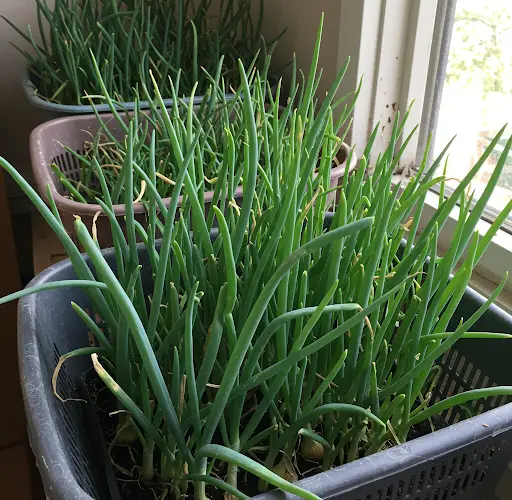Growing your own green onions at home is easy, affordable, and incredibly rewarding. These versatile kitchen staples can be grown in the smallest spaces—and with a little creativity, even household items like an old laundry basket can be transformed into productive growing containers.
In this guide, you’ll learn how to grow green onions using a recycled laundry basket—a simple and effective DIY method that makes the most of vertical space and repurposes common items you already have at home.
Why Grow Green Onions at Home?
Green onions, also known as scallions or spring onions, are a staple in many dishes around the world. They’re fast-growing, flavorful, and full of nutrients like vitamin K, vitamin C, and fiber. Growing them at home ensures a fresh, chemical-free supply that you can harvest as needed.
They’re also one of the easiest vegetables to regrow from kitchen scraps, making them ideal for both beginners and seasoned gardeners.
Materials You’ll Need
Here’s what you need to set up your vertical green onion garden using a laundry basket:
-
1 old plastic laundry basket (the type with holes or slats around the sides)
-
A plastic liner or old sack (optional, for containing soil)
-
Potting mix rich in organic matter
-
Compost or aged manure
-
Green onion bulbs or kitchen scraps (with roots still attached)
-
A tray or shallow container for the base (to catch excess water)
-
Watering can or spray bottle
Step-by-Step Instructions
Step 1: Prepare the Basket
Start by cleaning the laundry basket thoroughly. If the holes in the sides are too wide, line the inside with a mesh screen, old sack, or burlap to prevent soil from spilling out while still allowing drainage and airflow.
Place a tray or shallow basin under the basket to catch any excess water and keep your growing area clean.
Step 2: Add Soil and Compost
Mix quality potting soil with compost or aged manure to create a nutrient-rich medium. Begin filling the basket layer by layer. After every few inches of soil, insert some green onion bulbs horizontally so that the tips peek through the side holes of the basket. This creates a tiered planting system that uses the vertical space efficiently.
Continue layering soil and onion sets until you reach the top of the basket. You can plant a final layer on the surface, leaving the tops of the onions slightly exposed.
Step 3: Choosing Green Onion Bulbs
You can use store-bought green onions, onion sets, or saved kitchen scraps with intact roots. Simply cut off the green tops for cooking and plant the rooted ends in the soil. As long as the root section is around 1–2 inches long, it will regrow quickly.
Make sure to space the bulbs a couple of inches apart to give them room to expand.
Step 4: Watering and Care
Water gently after planting to moisten the soil evenly. Keep the soil damp but not soggy—green onions prefer consistent moisture but suffer in overly wet conditions. Use a spray bottle for light watering if needed.
Place the basket in a sunny spot—green onions thrive with 4–6 hours of sunlight per day. A bright balcony, patio, or windowsill works well.
Every 2–3 weeks, feed the plants with diluted liquid compost or a mild organic fertilizer to encourage vigorous regrowth.
Step 5: Harvesting Green Onions
One of the best things about green onions is how quickly they grow. You can start harvesting within 2–3 weeks of planting, depending on conditions. Use scissors to snip the green tops once they reach 6–8 inches tall, cutting just above the white base.
Leave the rooted part in the soil so it continues producing new shoots. With proper care, you can keep harvesting from the same plants multiple times.
Step 6: Reuse and Replant
Over time, green onions will become less productive. You can replace older bulbs with fresh ones to keep the basket producing year-round. This system works beautifully for continuous harvests and allows you to make the most of household scraps that would otherwise be discarded.
Benefits of the Laundry Basket Method
-
Space-saving: Ideal for small patios, balconies, or even indoors.
-
Recycling: Gives new life to old laundry baskets and reduces waste.
-
Great airflow and drainage: The holes in the basket help prevent root rot.
-
Layered planting: Maximizes growing surface area using vertical space.
-
Visual appeal: Creates an eye-catching, green “tower” of edible plants.
Final Thoughts
Turning a simple laundry basket into a vertical green onion garden is a clever and sustainable way to grow food at home, even with limited space. This method is low-cost, beginner-friendly, and suitable for all seasons, especially in temperate or warm climates.
With just a bit of care and creativity, you’ll enjoy a steady supply of fresh, homegrown green onions that add flavor and nutrition to your meals—all from something you might have otherwise thrown away.



